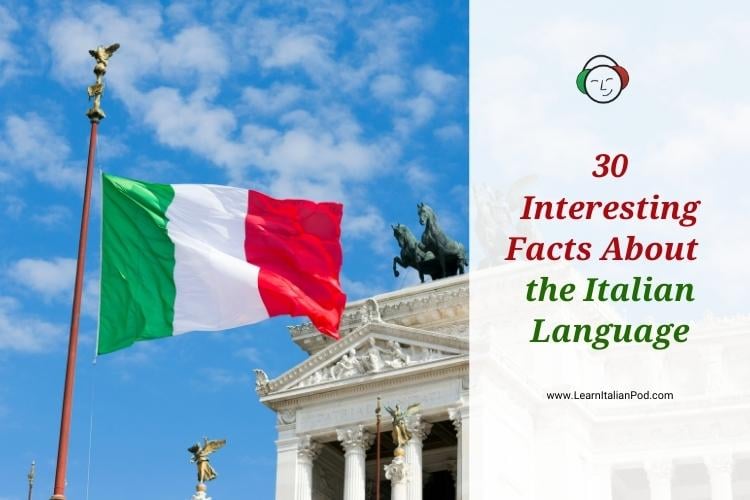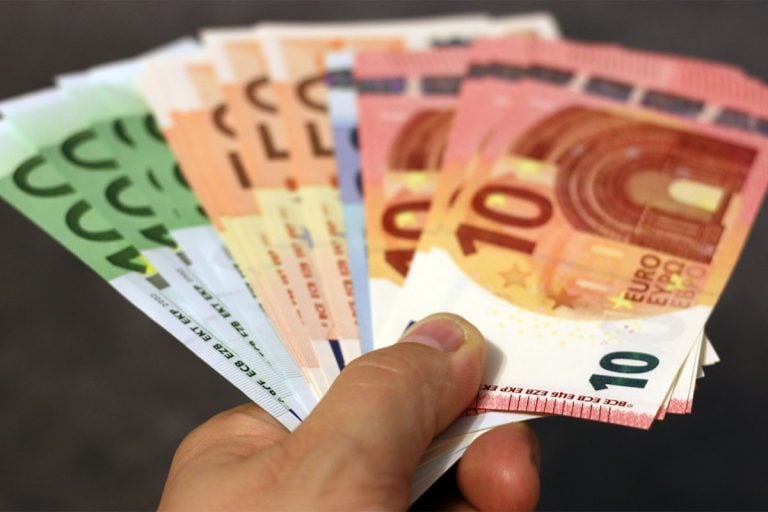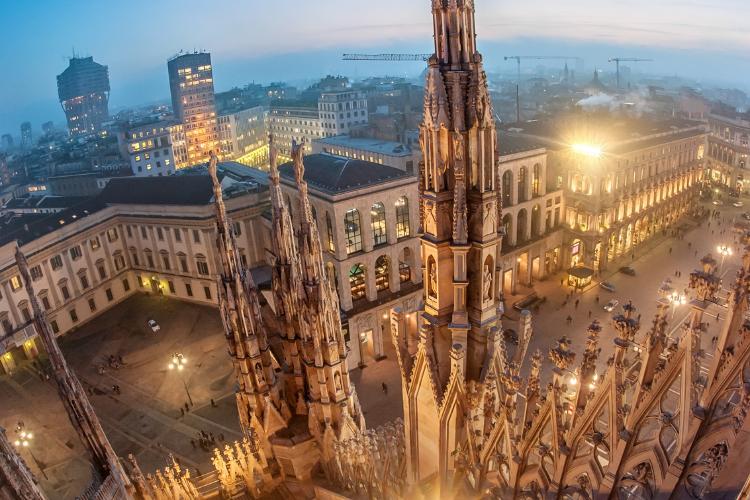21 Stunning Italian Flowers That Will Make Your Garden Bloom
What Are the Most Popular Italian Flowers?
Italian flowers are known for their beauty, uniqueness, and cultural significance. From carnations to roses, the variety of native Italian flowers is a testament to the country’s rich history and vibrant culture.
One exciting aspect of Italian flowers is how they are often referred to by their Italian names, such as giglio (lily) and gelsomino (jasmine). These Italian names of flowers add a layer of cultural significance and help further distinguish Italy’s diverse blooms.
What is Italy’s National Flower and Why?
The national flower of Italy is the white lily (Lilium candidum). The white lily symbolizes purity, innocence, and beauty in Italy and has been used to represent the country since the Roman Empire. It is also said to represent the Virgin Mary, who is particularly important to the Italian people.
Here are 21 famous Italian flowers, each with Italian and English names and descriptions. People find many characteristics of flowers attractive, including the flower’s appearance, fragrance, and meaning, so we’ll also look at all of those aspects.
1. Giglio – Lily

Not only is the white lily Italy’s national flower, but it’s also a gorgeous flower known for its fragrant and elegant scent. It is an iconic flower in Italian culture and symbolizes purity, innocence, and beauty. This flower is often used as an offering during religious ceremonies and is often seen in Italian artwork, literature, and films.
The white lily has a trumpet-shaped bloom with 3 to 6 petals that have a slightly ruffled texture. The flower is white and has a subtle, sweet scent. It is often used to decorate bouquets, floral arrangements, and other decorative pieces.
The white lily represents innocence, purity, and beauty in Italian culture. It symbolizes faith, hope, and love and is often given as a symbol of appreciation or good luck. It is also associated with the Virgin Mary in Catholicism, representing her purity and holiness. In Italy, the white lily is seen as a sign of peace and harmony.
Recommended Reading: Discover the rich symbolism of Italy. Delve into the captivating stories, traditions, and meanings behind Italy’s most cherished symbols. Unravel the secrets of a culture steeped in history and beauty.
2. Gelsomino – Jasmine

Jasmine (also known as Gelsomino in Italian) is a flowering plant known for its beautiful, fragrant flowers. This aromatic white flower symbolizes sweetness and beauty in Italian culture and can often be found in gardens and balconies.
The jasmine flower is trumpet-shaped and typically white or pale yellow. It is often used in perfumes and other fragrant products due to its strong, sweet scent.
In terms of meaning, the jasmine flower is often associated with love, sensuality, and purity. It is also a popular flower in many cultural and religious traditions and is often used in wedding bouquets and other ceremonial arrangements.
Gelsomino is one of Italy’s most popular flowers, often decorating gardens and homes.
3. Orchidea – Orchid

This exotic flower is commonly found in Italian gardens and is known for its delicate beauty. The Orchidea, or Orchid, is a gorgeous flower of Italy.
Orchids come in various shapes, sizes, and colors, but many species have elongated and delicate petals with distinctive, wavy appearances. The fragrance of orchids can vary widely, with some species having a robust and sweet scent while others have a more subtle or even no odor.
As for meaning, orchids are often associated with love, beauty, and strength and are often given as gifts to express these sentiments. Orchids are also popular in many cultural and traditional settings and are often used in wedding bouquets and other ceremonial arrangements.
This exotic and delicate flower is a favorite of Italian gardens and bouquets. In addition, the vibrant colors of the Orchid bring a special touch to Italian culture, and its sweet fragrance is a delight to all who encounter it.
4. Margherita – Daisy

The daisy (Italian name of the flower Margherita) is a flowering plant known for its simple yet striking appearance.
Daisies typically have a central yellow disc surrounded by white petals and are often associated with springtime and sunshine. They have a light, sweet fragrance and are often used in floral arrangements and bouquets.
Regarding symbolism, daisies are often associated with innocence, purity, and simplicity. In Italian culture, daisies are often given as gifts or used in decorative arrangements to denote these sentiments.
5. Garofano – Carnation

This sweet-smelling flower is a popular choice for special occasions in Italy and is often seen in bouquets and flower arrangements.
Carnations (Italian name Garofano) are flowering plants known for their beautiful, ruffled petals and wide range of colors. Carnations are often used in floral arrangements and bouquets and have a long-lasting bloom.
In terms of appearance, carnations can vary widely in color, including shades of red, pink, white, yellow, and purple. They have a sweet, clove-like fragrance and are often used in Italian perfumes and other fragrant products.
In terms of meaning, carnations are often associated with love, fascination, and distinction. In Italian culture, carnations are often given as gifts or used in decorative arrangements to express these sentiments.
Additionally, carnations are the official flower of Mother’s Day in Italy and are often used to honor and celebrate Italian mothers on this day.
6. Stella di Natale – Poinsettia

This festive flower is a Christmas-time favorite in Italy and is often used to decorate homes and churches.
The poinsettia (the Italian name of this flower is Stella di Natale) is a flowering plant native to Mexico and Central America. It is known for its bright, red, and green foliage and is often used as a decorative plant during the holiday season.
The poinsettia flowers are small and yellow and are surrounded by colorful bracts or modified leaves, which can be red, pink, white, or other shades. The poinsettia has a mild, floral fragrance.
In Italian culture, Stella di Natale (poinsettia) is a popular Christmas plant and is often given as a gift or used to add festive cheer to the holiday season.
7. Zinnie – Zinnia

Zinnias are flowering plants known for their bright, colorful flowers and easy-to-grow nature. Regarding appearance, zinnias have a wide range of colors, including shades of red, orange, yellow, pink, purple, and white. They are daisy-like and often used in gardens and floral arrangements. Zinnias have a mild, slightly sweet fragrance.
Regarding symbolism, zinnias are often associated with thoughts of absent friends and are often given as a way to remember or honor someone absent. In Italian culture, zinnias are popular garden plants often used in decorative arrangements.
They are known for their bright, cheerful appearance and are often used to add a pop of color to gardens and floral arrangements. Zinnias are easy to grow and make a stunning addition to any Italian landscape.
8. Viola – Violet

This delicate flower is associated with faithfulness and is often used to make perfumes in Italy.
Violets are flowering plants known for their small, delicate flowers and sweet fragrance. In terms of appearance, violets can be shades of purple, blue, white, or yellow and have distinctive, heart-shaped leaves.
They are often used in gardens and as groundcover plants and are also popular in floral arrangements. Violets have a sweet, floral fragrance and are often used in perfumes and other fragrant products.
Violets are often associated with love, loyalty, and faithfulness. They are popular garden plants often used in Italian culture decorative arrangements. They are known for their delicate beauty and sweet fragrance and are often given as a symbol of love and affection.
The Viola is a popular flower for Italian weddings and special occasions. Its unique beauty and vibrant color give it a special place in the hearts of the Italian people.
9. Rosa – Rose

The rose represents love in Italian culture and is often seen in bouquets and arrangements. When it comes to flowers of Italy, the Rosa, or rose, is one of the most beautiful.
In terms of appearance, roses have large, showy petals and a distinctive shape and can be shades of red, pink, white, yellow, orange, and many other colors. They are often used in gardens, as well as in floral arrangements and bouquets. Roses are strong, sweet, and often used in perfumes and other fragrant products.
Roses are often associated with love, beauty, and passion. Also, in Italian culture, roses are popular garden plants often used in decorative arrangements. They are known for their beauty and fragrance and are often given as a symbol of love and affection.
Roses are often used in Italian gardens and bouquets, making them perfectly reflect the Italian people.
10. Girasole – Sunflower

Sunflowers (the Italian name of this flower is Girasole) are flowering plants known for their large, bright flowers and cheerful appearance. In terms of appearance, sunflowers have a central disc of small, yellow flowers surrounded by bright yellow petals.
They have tall, sturdy stems and are often used as decorative plants in gardens and other outdoor spaces. Sunflowers are light, sweet, and often used in perfumes and other fragrant products.
In terms of symbolism, sunflowers are often associated with happiness, loyalty, and longevity. Also, sunflowers are popular garden plants often used in decorative arrangements in Italian culture. They are known for their bright, cheerful appearance and are often given as a symbol of happiness and good cheer.
11. Ciclamino – Cyclamen

Cyclamen (Ciclamino in Italian) is a charming flowering plant known for its vibrant, colorful flowers and heart-shaped leaves. The plant is native to Europe and the Mediterranean region and is particularly popular during the winter months in Italy.
The cyclamen flowers come in various shades, from white and pink to red and purple, and they often have a distinctive, unique shape with their petals curled upwards. The plant is also known for its beautiful foliage, usually marked with silver patterns.
In Italian culture, the cyclamen symbolizes deep affection and lasting love, making it a popular choice for gifts and decorations. It is often found in pots, adorning window sills, balconies, and terraces throughout Italy.
12. Pervinca – Periwinkles

Periwinkles, known as Pervinca in Italian, are delicate, trailing plants with small, star-shaped flowers. They are native to Europe, northwest Africa, and southwest Asia. They are often used as ground cover in gardens and landscapes.
The flowers of the periwinkle come in various shades of blue, violet, and white. They are typically five-petaled and have a contrasting eye-like center, giving them a captivating appearance.
Symbolically, periwinkles represent everlasting love and sweet memories, making them an ideal choice for weddings and other romantic occasions. In Italy, these charming flowers can be found in gardens and pathways and even adorning ancient ruins, adding a touch of color and beauty to their surroundings.
13. Mimosa – Mimosas

Mimosas, or Mimosa in Italian, are flowering plants known for their distinctive, fluffy, yellow blossoms. They are native to Australia but have been widely cultivated in Italy and other parts of the world.
The mimosa flower comprises tiny, bright yellow petals that create a soft, ball-like appearance. The plant’s fern-like leaves add to its visual appeal, making it a popular choice for gardens, parks, and boulevards.
In Italy, the mimosa is closely associated with International Women’s Day (March 8th), which is recognized as one of the most important events in Italy in March.
It is customary to gift these flowers to women on this day to celebrate their strength, resilience, and beauty. The mimosa’s vibrant color and unique appearance symbolize joy and vitality in Italian culture.
14. Bouganville – Bougainvilleas

Bougainvilleas, or Bougainville in Italian, are striking tropical plants known for their vibrant, showy bracts surrounding their small, tubular flowers.
These plants are native to South America but have been widely embraced in Italy and other Mediterranean countries for their ability to bring color and warmth to gardens and landscapes.
The bracts of the bougainvillea come in a wide range of colors, including pink, red, purple, orange, and yellow. The plant is a vigorous climber, often used to cover walls, trellises, and fences with its lush, cascading foliage and bright, eye-catching flowers.
In Italian culture, bougainvilleas symbolize passion, liveliness, and an appreciation for the beauty of life. Their vibrant colors and the plant’s resilience in challenging conditions make them famous for gardens and public spaces throughout Italy.
15. Peonia – Peonies

Peonies, or Peonia in Italian, are cherished flowering plants known for their large, lush blooms and exquisite beauty. They are native to Asia, Europe, and Western North America but have been widely cultivated and adored in Italy for centuries.
The peony’s flowers come in various colors, including white, pink, red, and even yellow. Their overlapping petals often characterize them, creating a stunning, full appearance. Peonies are also known for their lush, green foliage, providing a striking backdrop for their gorgeous blooms.
Peonies symbolize prosperity, good fortune, and romance in Italian culture, making them popular for weddings and other celebratory events. Their breathtaking beauty and luxurious presence have made peonies a favorite among gardeners and flower enthusiasts in Italy.
16. Crisantemo – Chrysanthemums

Chrysanthemums, or Crisantemo in Italian, are beloved flowering plants known for their diverse, vibrant blooms in various colors, shapes, and sizes. They are native to Asia and northeastern Europe and have been cultivated in Italy for centuries.
The flowers of the chrysanthemum can be found in various shades, including white, yellow, pink, red, and purple. Their unique, intricate petal arrangements create eye-catching patterns ranging from simple, daisy-like flowers to more complex, pom-pom-like structures.
In Italy, chrysanthemums are associated with Il giorno dei Morti (All Souls’ Day) on November 2nd. They often decorate graves as a symbol of remembrance and respect. The flower is also considered a symbol of longevity and fidelity, making it a popular choice for gardens and floral arrangements.
17. Campanula – Bluebells

Bluebells, known as Campanula in Italian, are beautiful flowering plants characterized by their graceful, bell-shaped blooms. They are native to temperate regions of the Northern Hemisphere and can often be found in woodlands, meadows, and gardens throughout Italy.
The flowers of the bluebell come in various shades of blue, violet, and occasionally white. They hang in delicate clusters, creating a captivating display as they sway gently in the breeze.
In Italian culture, bluebells symbolize humility, gratitude, and everlasting love. Their ethereal beauty and delicate charm make them a popular choice for gardens and bouquets and as a symbol of affection and appreciation.
18. Ranuncolo – Buttercups

Buttercups, or Ranuncolo in Italian, are delightful flowering plants known for their bright, glossy petals that often appear as if they have been polished. They are native to various parts of the world, including Europe, Asia, and North America. They can be found in meadows, fields, and gardens throughout Italy.
The buttercup flowers come in vibrant shades of yellow, white, and occasionally pink or red. Their cup-shaped blooms and glossy petals create a cheerful, radiant appearance that captures the essence of spring and summer.
In Italian culture, buttercups symbolize charm, playfulness, and the simple joys of life. Their bright colors and lustrous petals make them a popular choice for gardens and wildflower meadows and as a reminder to appreciate the beauty found in everyday moments.
19. Papavero – Poppies

Poppies, or Papavero in Italian, are captivating flowering plants known for their delicate, tissue-like petals and vibrant colors. They are native to various regions worldwide, including Europe, Asia, and North America. They are often found in meadows, fields, and gardens throughout Italy.
The flowers of the poppy come in a range of colors, including red, orange, yellow, white, and even purple. Their large, showy blooms and black or dark center create a striking contrast that draws attention and admiration.
In Italian culture, poppies symbolize remembrance, dreams, and the resilience of life. They are often associated with the memory of fallen soldiers and are used in commemorations of war and sacrifice. Poppies also exist in Italian gardens and landscapes, where their vibrant colors and delicate beauty are cherished.
20. Oleandro – Oleanders

Oleanders, or Oleandro in Italian, are stunning evergreen shrubs known for their vibrant, funnel-shaped flowers and dark, glossy leaves. They are native to the Mediterranean region and have been widely cultivated in Italy and other warm climates.
The flowers of the oleander come in various shades of pink, red, white, and yellow. They often grow in clusters, creating an eye-catching display that adds a touch of color and charm to gardens and landscapes.
In Italian culture, oleanders symbolize beauty, grace, and caution. While their flowers are undeniably beautiful, the plant is also known for its toxic properties as a reminder of the dual nature of life’s allure.
Oleanders are commonly found along roadsides, in gardens, and in other public spaces in Italy, where their beauty is celebrated and their exemplary nature is respected.
21. Croco – Crocuses

Crocuses, or Croco in Italian, are delightful, early-blooming flowers known for their bright colors and delicate, cup-shaped blooms. They are native to Europe, Asia, and North Africa and are often found in meadows, woodlands, and gardens throughout Italy.
The crocus flowers come in shades of purple, yellow, white, and even striped patterns. Their slender, grass-like foliage provides a complementary backdrop for their vivid blooms, which often emerge through the snow to herald the arrival of spring.
In Italian culture, crocuses symbolize hope, renewal, and life awakening after a long winter. Their ability to bloom even in the face of harsh conditions makes them a popular choice for gardens and as a symbol of perseverance and optimism. They are cherished in Italy for their vibrant colors and the promise of warmer days.
Further Reading:







